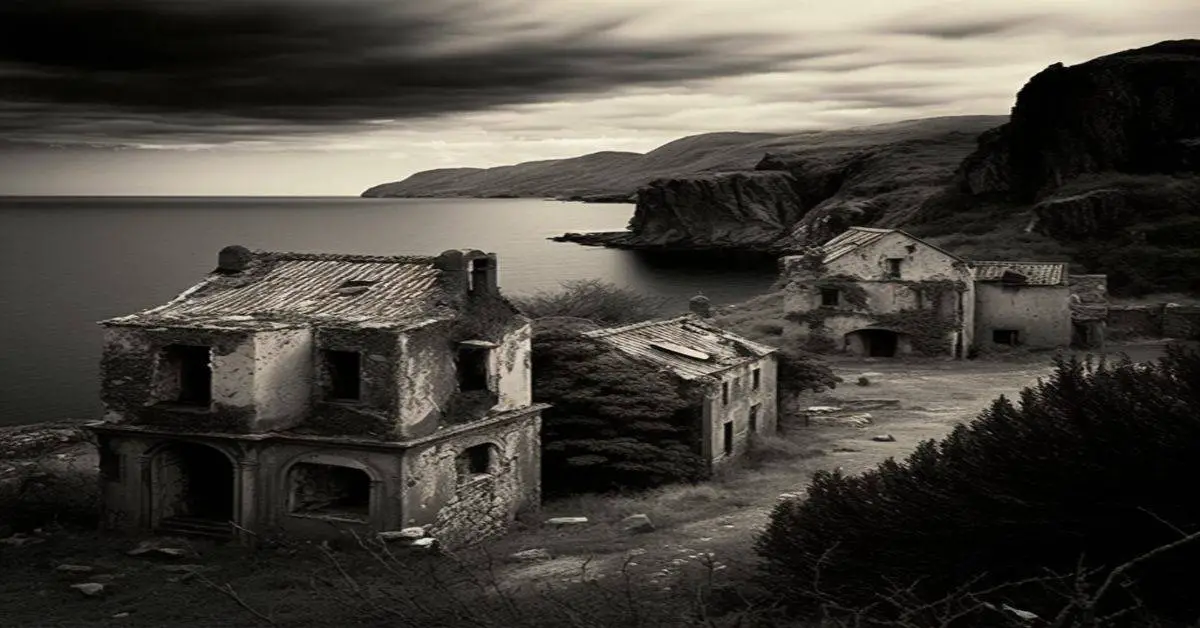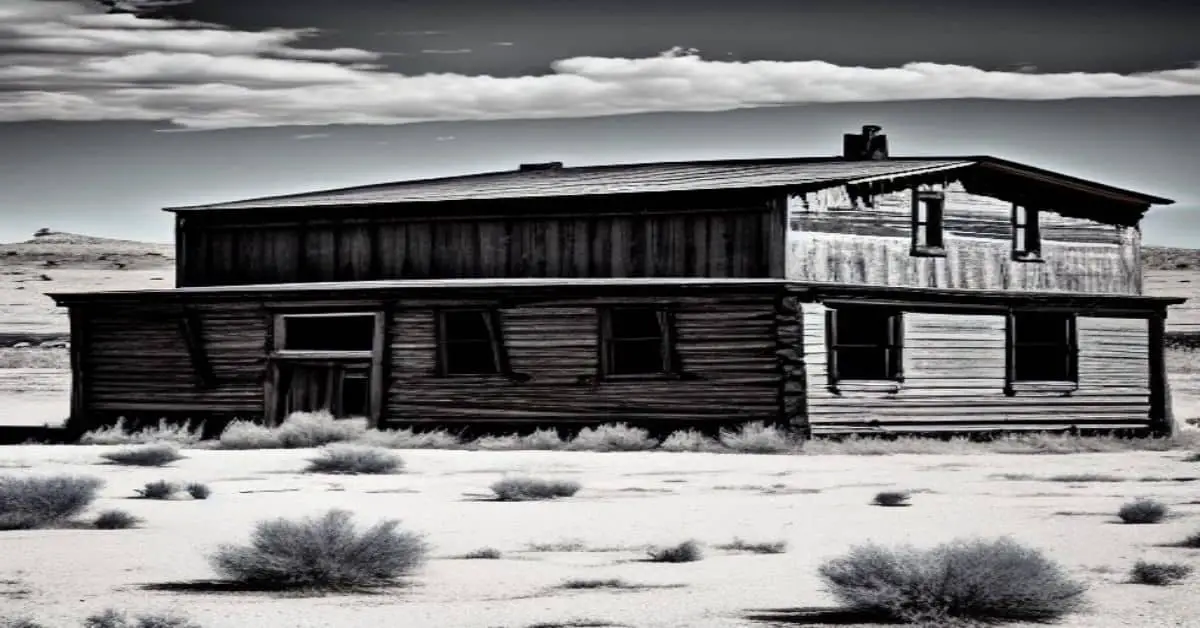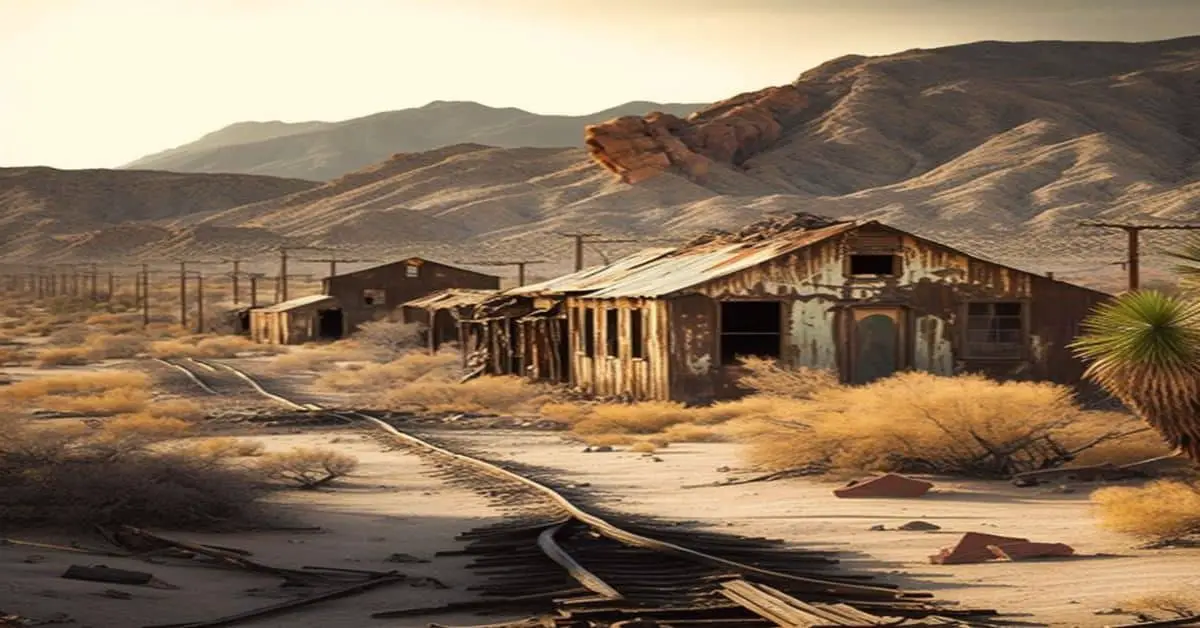Nestled in the Santa Cruz County of Arizona lies the haunting beauty of Kentucky Camp, a once-thriving gold mining town that played out in 1886. Today, visitors can explore this Arizona ghost town and discover the history and charm of a place where the past meets the present.
Kentucky Camp, Arizona, is a testament to the resilience of the human spirit, a place where the beauty and brutality of life in America’s Wild West are still palpable. The history and origins of Kentucky Camp are shrouded in mystery and folklore. Some say it was named after a group of Kentucky miners who came to the area in search of gold, while others believe it was named after a Kentucky woman who was one of the few survivors of a brutal Apache attack.
Regardless of its origins, Kentucky Camp is a haunting and beautiful place that captures the imagination of all who visit. From the rusted mining equipment to the restored buildings, every detail tells a story of a once-thriving community brought to its knees by the harsh realities of life in the Old West.
Key Takeaways
- Kentucky Camp, Arizona, was once a thriving gold mining town that played out in 1886.
- Restoration efforts have been underway since 1991, focusing on community involvement and partnerships with local groups and organizations.
- Visitors can explore the town and discover its history and charm, from rusted mining equipment to restored buildings, every detail tells a story of a once-thriving community.
- Plans to create educational programs for school groups and visitors to learn about the town’s history and the mining industry.
History and Origins
Kentucky Camp, Arizona, once a thriving gold mining town that played out in 1886 and saw a failed revival attempt in 1904, now has a rich history and origins that can be explored through the many remaining buildings and ongoing restoration efforts by the Forest Service.
The town was established in the late 1800s by prospectors drawn to the area by the promise of gold. The town’s population grew rapidly, and at its peak, it had over 300 residents, several businesses, and a post office.
However, the gold mines began to play out, and by the late 1800s, the town’s population began to dwindle. A revival attempt was made in 1904, but it failed due to a lack of infrastructure and resources.
Today, the town is a popular destination for history enthusiasts and tourists, who can explore the many remaining buildings and learn about the town’s rich history and origins. The ongoing restoration efforts by the Forest Service are helping to preserve the town’s unique character and haunting beauty.
“Kentucky Camp Cabin and Headquarters is located in the Santa Rita Mountains near Sonoita, Arizona in the Coronado National Forest. The five adobe buildings originally served as headquarters for the Santa Rita Water and Mining Company from 1902 to 1906. The facility also served as a cattle ranch from the 1920s through the 1960s. The Forest Service acquired the land in 1989 and it has since become an ideal location for guests seeking a unique lodging experience, rich in mining and ranching history.”
https://www.recreation.gov/camping/campgrounds/233169?tab=info
Accommodations and Facilities
The available accommodations at Kentucky Camp, Arizona offer visitors a glimpse into the past while providing modern conveniences. One option is a bed and breakfast available for rent, allowing guests to stay in a restored historic building.
In addition, three other buildings on the property are in excellent condition and may be available for use. For those staying overnight, on-site bathrooms are conveniently located for guest use. The groundskeepers also live on site, ensuring any issues can be quickly addressed.
However, it is important to note that some buildings may be restricted and unavailable. Despite this, visitors can still enjoy the haunting beauty of Kentucky Camp while staying in comfortable and historically significant accommodations.
Restoration and Future Plans
Restoration efforts have been underway at this historic gold mining town since 1991, and the Forest Service has plans to continue preserving and maintaining the remaining buildings for future generations to enjoy.
The restoration process involves a careful balance of maintaining the historical integrity of the buildings while implementing modern safety codes. The result is a beautifully preserved town that offers visitors a glimpse into the past.
Future developments at Kentucky Camp include a focus on community involvement. The Forest Service is working to create partnerships with local groups and organizations to help maintain and promote the town’s historical significance.
Additionally, plans are in the works to create educational programs for school groups and visitors to learn about the town’s history and the mining industry that once thrived here.
With ongoing restoration efforts and community involvement, Kentucky Camp will remain a treasured piece of Arizona’s history.
Frequently Asked Questions
Is there any evidence of paranormal activity or hauntings at Kentucky Camp, Arizona?
Paranormal investigations and ghost hunting have not yielded any evidence of hauntings at Kentucky Camp. While the town has a history of gold mining, restoration efforts by the Forest Service have focused on preserving its architectural and historical significance.
Are there any ghost stories or legends associated with the town’s history?
There are no documented ghost sightings or local folklore associated with Kentucky Camp. However, visitors have reported supernatural experiences and unexplained phenomena, which may add to the mysterious atmosphere of this historic gold mining town.
Is there any information on the daily life of the miners who lived in Kentucky Camp during its heyday?
Information on miner lifestyle and daily routines at Kentucky Camp is limited. However, it is known that the town was a gold mining community that played out in 1886. Revival was attempted in 1904 but failed.
What types of wildlife can visitors expect to see in the surrounding area?
Wildlife sightings in the surrounding area of Kentucky Camp may include mule deer, javelinas, coyotes, and a variety of bird species. Nature photography opportunities are plentiful, with scenic views of the surrounding mountain ranges and nearby creeks.
Are there any hiking trails or outdoor activities available near Kentucky Camp, Arizona?
Visitors to Kentucky Camp can enjoy hiking trails and outdoor recreation in the surrounding area. The nearby Coronado National Forest offers a variety of trails, including the Arizona Trail, with opportunities for hiking, biking, and horseback riding.


